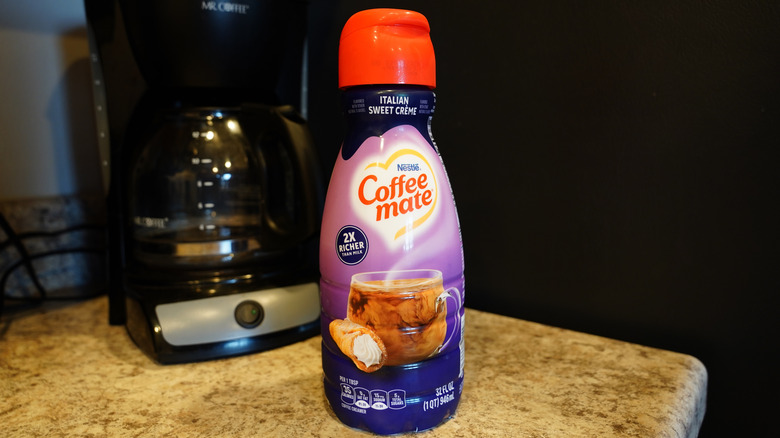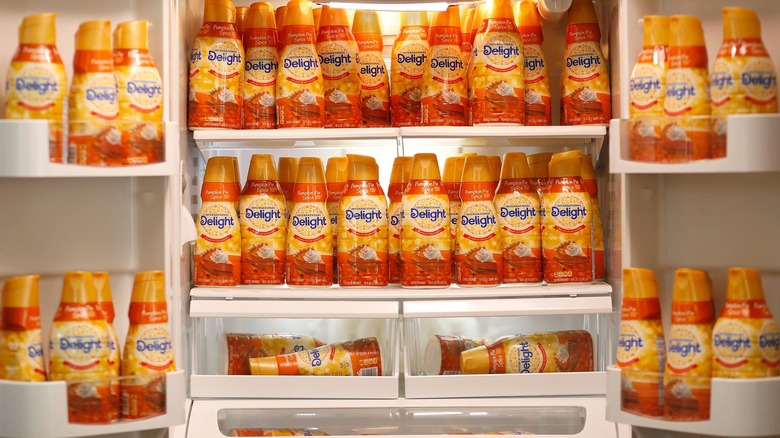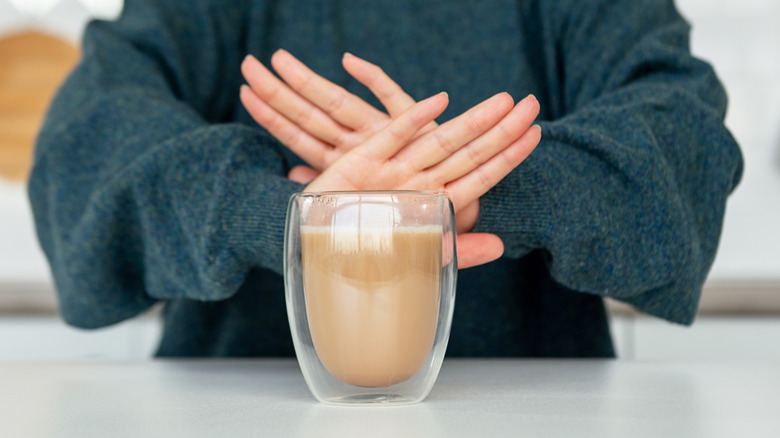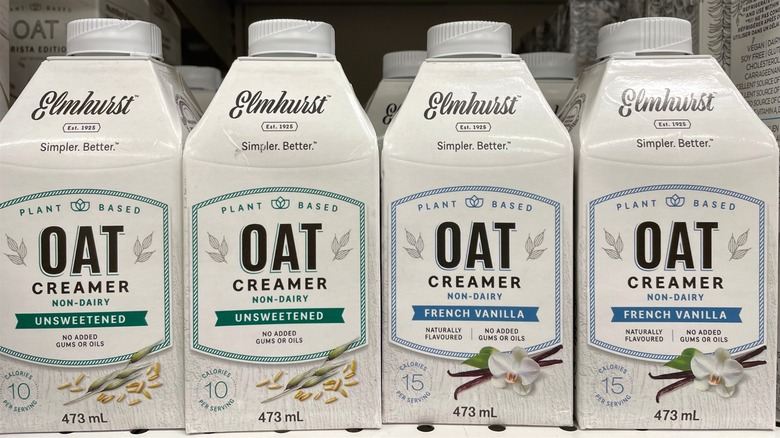How Long Is Coffee Creamer Good For After Being Opened?
Hardcore coffee drinkers will always consume their java black, but for the rest of us, there are little add-ins like sweeteners and coffee creamers. Coffee creamers come in so many varieties and flavors (Starbucks Caramel Macchiato creamer, anyone?), and when you find one you love, you'll want to make sure you always have a bottle in your fridge. But how long do you have to drink it all until the coffee creamer starts to go bad?
Once opened, according to the USDA, liquid coffee creamer will last up to two weeks in the fridge, giving you plenty of time to pour it into your cup of Joe every morning (and afternoon, if you need a pick-me-up). Unopened liquid coffee creamer is good for up to a few months, provided it's been kept in the fridge. Liquid coffee creamer that you pulled from the refrigerated section of your grocery store should continue to be refrigerated once you bring it home; it should also not be left on the counter for longer than two hours.
How to properly store coffee creamer
As mentioned, creamer that is purchased from the refrigerated section should be kept in the fridge once you get the bottle home (even before opening it), but not just anywhere. While many creamers produced today are made up of a base of sugar, oil, and water, they are nonetheless susceptible to the changes in temperature that can occur every time you open your fridge door. So just like most dairy products, creamer should not be kept in the door compartments (tempting though it might be) and should at least be kept on one of the shelves.
If you have purchased shelf-stable coffee creamer in little cups, you can keep them in a cool, dark place (your pantry is ideal) for about a year from the date of purchase. If they pass their "best by" date, they can still be consumed up to a week after. Powdered creamer, which is also shelf-stable, should likewise be kept in a temperature-consistent location, out of the sun. This will stay good for up to two years unopened and six months once the lid has been popped.
Please don't use creamers with any of these signs of spoilage
When you find a bottle of creamer that you totally forgot about in the back of your fridge (good for you storing it where it's coldest!), but it's only a few days past its best by date, should you go ahead and use it? Not without checking for these signs of spoilage first. Perhaps one of the most obvious will be the smell. Fresh creamer should have a pleasant, sweet aroma that reflects the taste. Creamer that has gone bad may smell "off" at best, or downright sour or rancid at worst.
If you pour it into your coffee and notice chunks or clumps, first, dump out the coffee because you won't be drinking it, and second, dump out the rest of the creamer, because it's way past its prime. The same goes for any mold that might appear on the surface of the creamer or even on the sides of the bottle (because most of us don't give it a second thought, it's important to look inside your creamer bottle once in a while).
How long non-dairy creamer lasts and how to make your own
Non-dairy coffee creamer is the go-to option for some folks, and the shelf life is comparable to the regular stuff. Liquid versions are typically made with dairy alternatives such as soy or coconut milk, but despite the lack of dairy, they should be treated similarly to traditional creamers. Once opened, they should be refrigerated and will last for up to two weeks.
Powdered non-dairy creamer is more forgiving, but again, not all that dissimilar from the real deal. Stored in a cool, dry environment, it should last for about two years if it remains unopened. After you break the seal, you'll have somewhere between three and six months to use it up before you notice a degradation of quality.
If you discover your creamer has gone off, don't panic – salvage your morning cup of Joe by making your own. For a liquid creamer, combine condensed milk (which can also be made at home), half-and-half, vanilla, and almond extract into a container and give it a good shake. If you want to keep it non-dairy, substitute oat, almond, or coconut milk and maybe a touch of sweetener.
Preparing a powdered version gives you a little more wiggle room in the creativity department. Dried milk or a non-dairy alternative mixed with sugar provides a solid base, then add in whatever you think would upgrade your morning perk. Warming spices like cinnamon and cardamom are fair game, as is vanilla powder, cocoa powder, or even a pumpkin spice blend.



